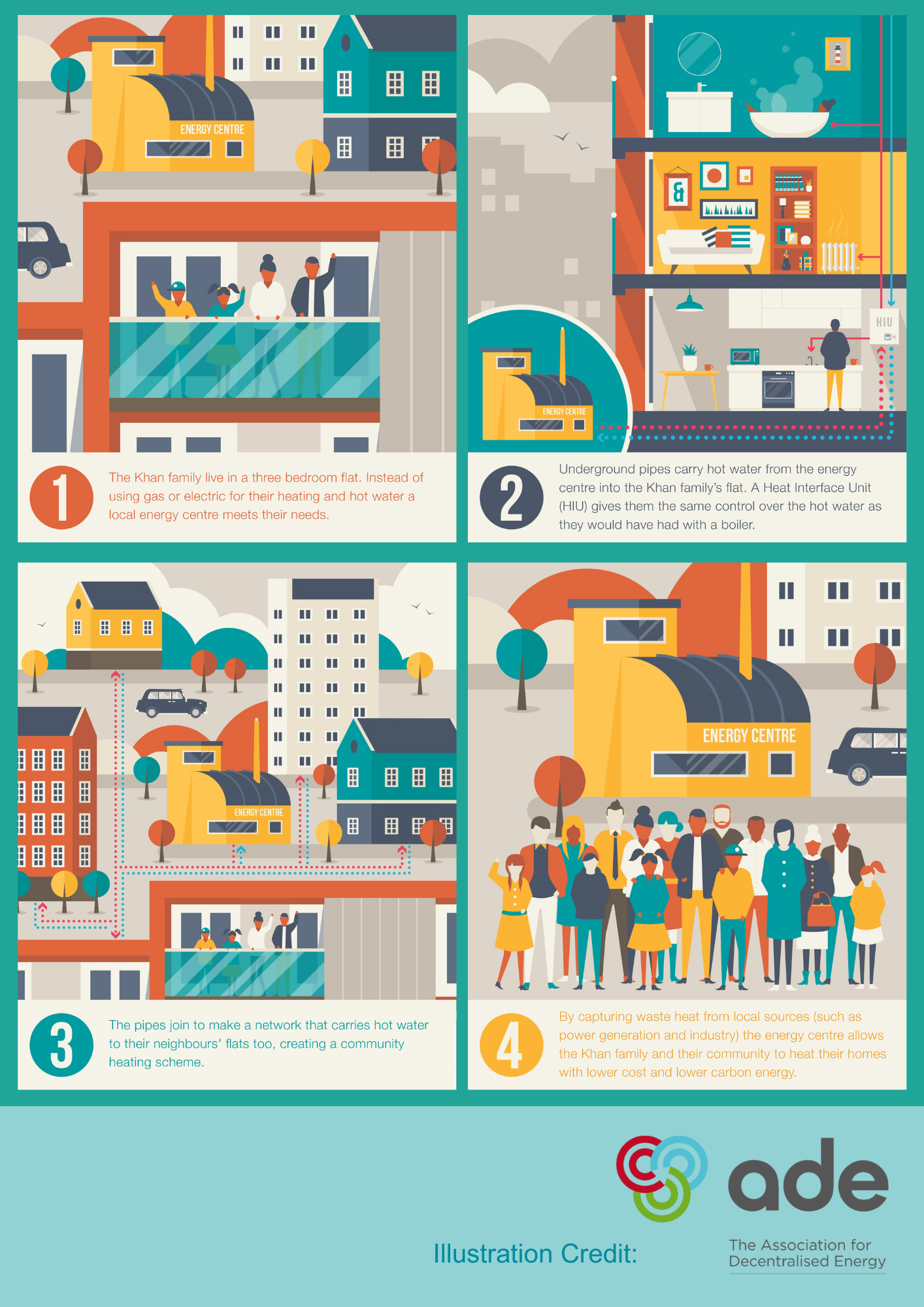Blog: What is District Heating?
District Heating (also known as heat networks) supply heat from a central source to consumers, via a network of underground pipes carrying hot water.
Heat networks can cover a large area or even an entire city, or be fairly local supplying a small cluster of buildings. This avoids the need for individual boilers or electric heaters in every building. The central heat source is often referred to as ‘the energy centre’.
There are many possible technologies that can provide the input to a heat network including power stations, energy from waste (EfW) facilities, industrial processes, biomass and biogas fuelled boilers and Combined Heat and Power (CHP) plants, gas-fired CHP units, fuel cells, heat pumps, geothermal sources, electric boilers and solar thermal arrays.
Heat is brought into each building through a ‘heat exchanger’ which, for a residential connection, is about the same size as a small gas boiler. All the same heating controls are available and to the end user the central heating and hot water system works in the same way as a domestic gas-fired central heating system without the need for any combustion to take place inside the building. Heat networks can be various sizes and serve various combinations of building types. Heat networks can be extended over time, and new heat demands and heat sources can be added to the network.


